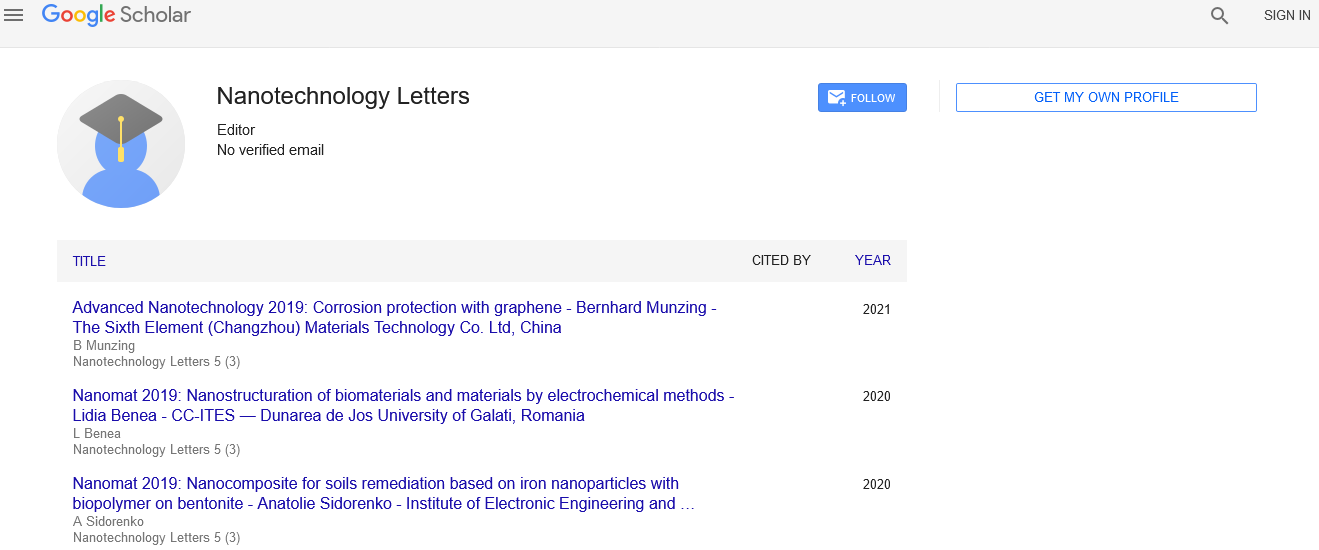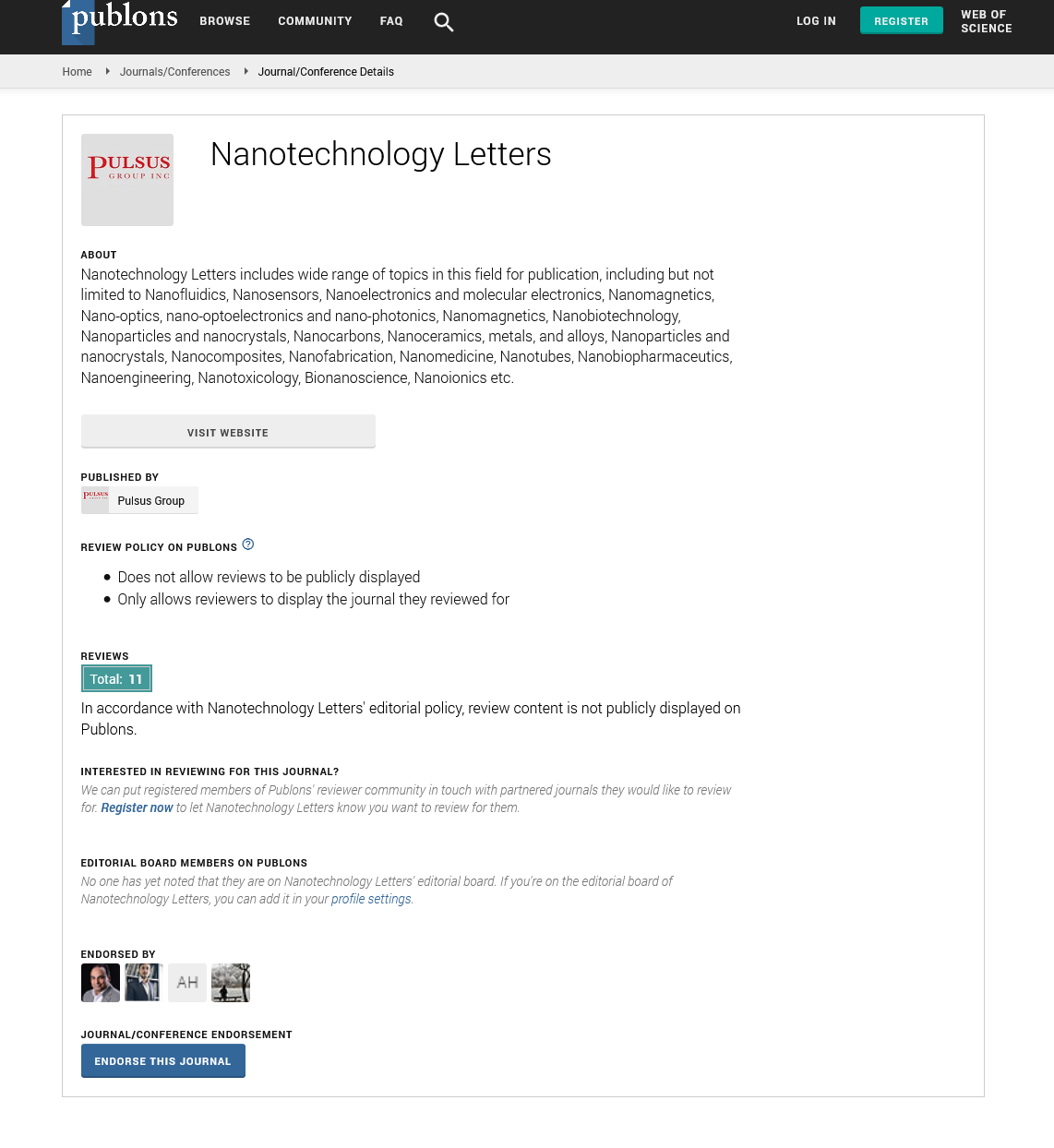Favipiravir and coronavirus
Received: 04-Jan-2022, Manuscript No. pulnl-22-2948; Editor assigned: 07-Jan-2022, Pre QC No. pulnl-22-2948 (PQ); Accepted Date: Jan 27, 2022; Reviewed: 22-Jan-2022 QC No. pulnl-22-2948 (Q); Revised: 25-Jan-2022, Manuscript No. pulnl-22-2948 (R); Published: 28-Jan-2022, DOI: 10.37532. pulnl-22-2948.
Citation: Silva M A. Favipiravir and coronavirus. Nanotechnol.lett.2022;7(1):01-02.
This open-access article is distributed under the terms of the Creative Commons Attribution Non-Commercial License (CC BY-NC) (http://creativecommons.org/licenses/by-nc/4.0/), which permits reuse, distribution and reproduction of the article, provided that the original work is properly cited and the reuse is restricted to noncommercial purposes. For commercial reuse, contact reprints@pulsus.com
Editorial
Flu is a disease of viral etiology that occurs as annual epidemics in the winter and winter months. pandemic only occasionally. Although it is a mild and self-limited disease, when it affects the population elderly or people with chronic underlying diseases, can present high morbidity and even mortality1 The best strategy to deal with epidemics annual flu is prevention by applying the adequate influenza vaccine. However, its efficiency and effectiveness is not always what is desired, so that in serious presentations we must use some treatment antiviral.
Favipiravir is an antiviral drug that selectively inhibits the RNA-dependent RNA polymerase of influenza virus. It is phosphoribosylated by cellular enzymes to its active form, favipiravir-ribofuranosyl-5’-triphosphate (RTP). Favipiravir is active against a broad range of influenza viruses, including A(H1N1)pdm09, A(H5N1) and the recently emerged A(H7N9) avian virus. It also inhibits influenza strains resistant to current antiviral drugs, and shows a synergistic effect in combination with oseltamivir, thereby expanding influenza treatment options. Recently, T-705 has been shown to give 100% protection against aerosol Ebola virus E718 infection in immune-deficient mice as well as inhibiting Ebola virus infection in cell culture.
The mechanism of action of favipiravir is inhibitiondirect replication and transcription of the viral genome typeRNA, by blocking RNA polymerase activityRNA-dependent present in influenza viruses and other viruseswith RNA genome, including Ebola10-12 virus. Thus hisselectivity index (the ratio of 50% of the concentrationcell inhibitory (CC50) / 50% of the inhibitory concentrationagainst influenza (IC50), it is higher than 6,000 in relation to ribavirin, another antiviral inhibitor of RNA polymerases.
The subtypes and strains of known influenza viruses both A, B as C, I include those with demonstrated genetic resistance against neuraminidase inhibitors.
Favipiravir can be administered orally in prodrug form (ribofuranose), being rapidly adsorbed at the intestinal level and converted into the initial active form by cellular nucleosidases5-7. The optimal dose has not yet been definitively established but could be 1200-1400 mg / first day and 400mg / day for 5-7 days.
has also proven to be effective in combating coronavirus, patients tested negative for the virus four days after taking the drug. Those infected who did not receive treatment with favipiravir took about 11 days to achieve the same result.In addition, 91% of patients treated with favipiravir showed significant improvements in lung conditions, compared to 62% in those who did not receive the same medication.Japanese doctors are currently using Avigan for clinical studies in patients diagnosed with Covid-19 who have mild or moderate symptoms of the disease. The expectation is that the drug will prevent the virus from multiplying in the body
We hypothesized that favipiravir would be non-inferior to arbidol in terms of efficacy for moderate symptoms, and improves outcomes clinical recovery of fever, cough, and breathing difficulties compared with antiviral efficacy of arbidol. We therefore assessed the clinical efficacy and safety of favipiravir versus arbidol as treatment for COVID-19.
In moderate COVID-19 patients untreated with antiviral previously, favipiravir can be considered as a preferred treatment because of the higher clinical recovery rate of day 7 and more effectively reduced incidence of fever, cough except manageable antiviral-associated adverse effects.
The time it takes for a patient to be negative in the coronavirus test has been 4 days among those who took favipiravir and 11 days among those who did not. Likewise, improvements in radiographs of the lungs have been observed in 91% of patients treated with favipiravir, compared to 62% of patients in the control group.
Favipiravir is a prodrug that is metabolized in its active form, favipiravirribofuranosyl-5’-triphosphate (favipiravir-RTP), available in oral and intravenous formulations.
A mutation in the influenza A virus PB1 gene that confers resistance to favipiravir. The fitness cost of this mutation, resulting from a decrease in polymerase activity, is compensated for by a mutation in the PA gene that can restore polymerase activity and viral growth, while maintaining favipiravir resistance. We use in vitro analyses and structural modeling to link favipiravir resistance to a molecular change in the RdRP active site that affects nucleotide incorporation. Our findings suggest that a universal mechanism for favipiravir resistance exists.
This hypermutability favors the rapid adaptation of influenza viruses to environmental and environmental changes, host, as well as immune pressure14,15. Nevertheless in certain occasions this phenomenon can take the virus to the extinction because the mutations determine a decrease in fitness (adaptability) and loss of viability. This concept is the basis of some of the new antivirals, that is to say, they look for drugs that joining the genome and by blocking polymerase determine an increase in the accumulation of mutations and collapse viral progeny.
Together, these observations are important for the use o synthesis in mammalian cells and is not toxic to them.
Among them, influenza viruses have been totally sensitive to this new antiviral, including strains with genetic resistance to neuraminidase inhibitors (oseltamivir). Its mechanism of action consists of blocking viral replication and inducing lethal mutagenesis that determines the loss of the infectious activity of influenza viruses. Its activity is intense in the respiratory tract, reducing viral loads to non-infectious levels favipiravir as an antiviral drug against influenza virus infections in the present and future.
REFERENCES
- Perlman S, Netland J. Coronaviruses post-SARS: update on replication and pathogenesis. Nat Rev Microbial. 2009 ;7(6):439-50.
Google Scholar Crossref - Chan JF, To KK, Tse H, et al. Interspecies transmission and emergence of novel viruses: lessons from bats and birds. Trends Microbiol. 2013 1;21(10):544-55.
Google Scholar Crossref - Lei J, Kusov Y, Hilgenfeld R. Nsp3 of coronaviruses: Structures and functions of a large multi-domain protein. Antivir Res. 2018 1;149:58-74.
Google Scholar Crossref - Song W, Gui M, Wang X, et al. Cryo-EM structure of the SARS coronavirus spike glycoprotein in complex with its host cell receptor ACE2. PLoS Pathog. 2018 13;14(8):e1007236.
Google Scholar Crossref - Gordon CJ, Tchesnokov EP, Feng JY, et al. The antiviral compound remdesivir potently inhibits RNA-dependent RNA polymerase from Middle East respiratory syndrome coronavirus. J Biol Chem. 2020 Apr 10;295(15):4773-9.
Google Schoar Crossref - Monto AS. The role of antivirals in the control of influenza. Vaccine. 2003 1;21(16):1796-800.
Google Scholar Crossref






